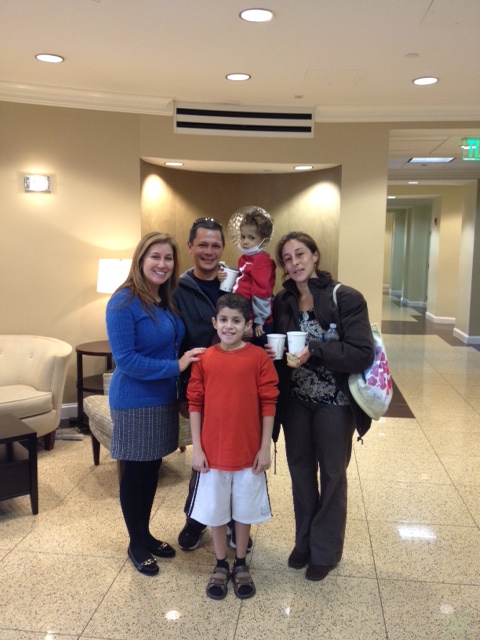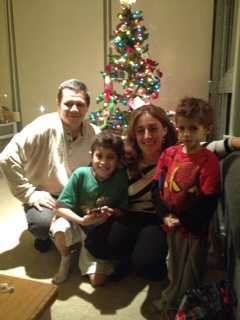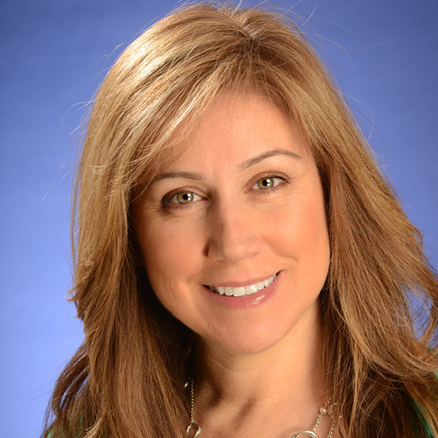Friends of Patients at the National Institutes of Health provides emotional and financial support to ensure patients receive the treatment they need while simultaneously furthering the research capabilities of the National Institutes of Health. Giant Food has supported this nonprofit organization through its Community Bag Program.
Tell us about Friends of Patients at the National Institutes of Health.
Friends of Patients at the National Institutes of Health (NIH) is celebrating our 40th anniversary this year. Patients come to the NIH to participate in clinical trials and research that can help treat or cure their illness, whether it is cancer or a rare disease. There are 27 institutes at the NIH that all handle trials and research on different diseases.
Friends was started in 1984 by a group of nurses, social workers, and doctors at the NIH Clinical Center. Back then, patients received free treatment and could stay at the hospital for free, but during follow-up treatment, they needed to stay in the local area at their own expense.
Patients come from different parts of the country and from all over the world, and many could not afford to stay in Bethesda, Maryland. Instead, many patients slept on couches in the hallways, and caregivers often spent weeks sleeping on chairs in patients’ rooms. Other patients would try to find a local apartment they could manage to afford. Some could not get treatment because they couldn’t afford to stay.
After seeing this, a small group formed a grassroots organization called Friends of the Clinical Center. The group began having small fundraisers and bake sales to help patients as much as they could. The organization continued in this way for 20 years.
In 2007, I joined the organization as the executive director. Since then, we’ve changed our name to Friends of Patients at the NIH to reflect the two main goals of our mission: to support the research at the NIH and support the patients by enabling them to participate in research to help find a cure for their illness.

What services do you provide to the community?
After meeting with several doctors, medical teams, and social workers at the NIH, we found the biggest need was local housing. I met with developers who were building new apartment complexes in the area and was able to get a nonprofit discount through the Moderately Priced Dwelling Units in Montgomery County. With this discount, we’ve been able to rent low-cost apartments within walking distance of the NIH.
We have five apartments dedicated to our cancer transplant and sickle cell patients. Once one of these patients receives a transplant, they have to stay in the area for 100 days, which can be difficult for people to afford. Now, they can stay with their caregiver at our beautifully furnished apartments for free. We also provide Giant Food gift cards on a weekly or biweekly basis so that they can have food delivered.
It’s a comfortable home away from home. Patients don’t have to worry about how they’re going to pay for a place to stay or how they’re going to pay for food. Instead, they can just recover and keep going through the treatment. We’ve had so many success stories. When patients check out of our apartments, they feel like they have new hope in life since they have been able to get through their treatment and recover. It’s made a big impact on our community.
When patients check out of our apartments, they feel like they have new hope in life since they have been able to get through their treatment and recover.
Housing is our biggest and most successful program, but we support patients in many other ways. We aid with transportation. We also help patients coming to the NIH pay rent, mortgage, and utilities back home. Many have been in the hospital for several months and can’t work, so we’ll cover costs back home to ensure they have a home to return to. We usually pay beyond a month after they’ve returned home to help them get back on their feet.
We’re a very small organization. Our budget is under $500,000. We try to do as much as we can with every little bit of funding that comes in. Our funds come from fundraising events, donors, and corporate sponsors. It’s often hard to get the word out since we are a nonprofit operating within a government facility. It’s really important that people get to know us and understand what we do.
What sets Friends of Patients at the National Institutes of Health apart from other nonprofits in your community?
We support research at the NIH, the largest research hospital in the country, if not the world. The research conducted here is changing not only patients’ lives but also the lives of future generations. The NIH has found cures for different kinds of cancer. Right now, they’ve been able to cure sickle cell in many patients. There are so many breakthroughs, and those not only help the small community at the NIH but also people worldwide. Our tagline is “Many helping one, one helping many.” Many people support one patient, but that one patient could help find a cure for many people.
Tell us a story that illustrates the good work of your organization.
The first time we were able to offer an apartment was in 2015. A family came to the NIH with two small boys who both were very sick from the same rare disease.

Their social worker came to my office and said, “A family has been here for three months and has no place to stay. They’ve run out of all their funds. They sold their house and everything they owned to be able to come and get treatment for their sons. The parents were both sleeping in reclining chairs, and the two boys were in the same hospital room they had been in for three months. Do you think there’s anything we could do?”
At the time, I was in conversations with Bozzuto Management, trying to get one apartment that could get the housing program started. I called them immediately and told them we had a family in desperate need. Within three days, they partnered with Suite America and prepared a furnished apartment for our patients.
I brought the family over and gave them the keys the day before Thanksgiving. They were so amazed that we would provide them with a home. As I gave them a tour of the apartment, the mother cried and repeated, “God bless you.”
I told them, “It’s Thanksgiving tomorrow. Let’s order you a turkey and have a nice meal.”
It was a very special time because when they moved in, they got news that their younger son may not survive to see the new year. My board all came together; we got their son’s wish list and bought a Christmas tree with decorations and all of the gifts. They were so grateful.

Their youngest son lived through the spring. He was too far gone with the disease, but his brother was able to keep receiving treatment at NIH and has continued to do well since.
It was very meaningful to be able to support this family through such a difficult time in their life. We brought a little bit of joy to those little boys and their parents. This story pushed us to keep moving forward with the housing program. We are proud to bring a little bit of respite, joy, and hope to patients and their families.
We are proud to bring a little bit of respite, joy, and hope to patients and their families.
What do you want people to know about Friends of Patients at the National Institutes of Health?
We’re small, but we do a lot of good. Supporting the research at the NIH means supporting the patients. Without the patients, there wouldn’t be research, and no cures or treatments would be found. The hope we give patients and families extends their lives and makes their lives better.
Without the patients, there wouldn’t be research, and no cures or treatments would be found.
It’s really important for the local community to know what’s happening at the NIH. It’s not just a huge government facility. It’s filled with people who really care about the patients and their work.
Some doctors have been at the NIH for 40 to 50 years, such as Dr. Anthony Fauci, Dr. Francis Collins, and Dr. Steven Rosenburg. They have spent countless hours in their labs on the weekends and at night. All of the doctors, scientists, nurses, and staff are fully dedicated to the mission of finding cures and making a difference.
How will you use the funds you’ve received from the Giant Food Community Bag Program?
Usually, these funds go towards groceries for the patients. For our local patients who are in the apartments, we’re able to provide gift cards. We give them $100 to $150 weekly to get groceries delivered to make healthy meals.
We are very grateful for the partnership. Every little bit helps. We make sure all our donations go a long way. We have very low overhead, so the majority of funds raised go directly to the patients and their families.

Interview with Heidi Williams, Executive Director
Published March 24, 2025.

